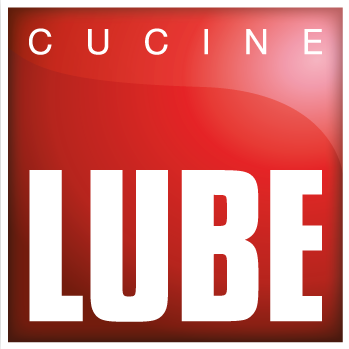Glass
Glass doors are composed of an extruded profiled aluminium frame with a matte or polished, brushed/oxidised or powder-coated finish. A glossy or satin glass in bronze, transparent, stop-sol or painted versions with a thickness of about 4 mm is applied to the structure of the aluminium frame (in some cases with polypropylene honeycomb). The glass is always tempered, meaning that it is particularly resistant to impact. By its very nature, being non-porous, it is waterproof, hygienic, resistant to wear and aesthetic decay, and easy and quick to clean.
Where to find them
- Doors
- Domestic appliancess
- Shelvess
- Back panelss
- Tabless
- Worktops
Technical data
Glass is a highly hygienic material with a high aesthetic impact that can be used to produce many kitchen components: doors, tops, backs, shelves, appliances/hobs and tables.
Glass doors are composed of an extruded profiled aluminium frame with a matte or polished, brushed/oxidised or powder-coated finish for a door thickness that can vary between 20 and 24 mm. In some cases the door can also have the particular structure of being hollowed in the back with a PP (polypropylene) panel ensuring greater stability but also a greater aesthetic impact. A glossy or satin glass in bronze, transparent, stop-sol or painted versions with a thickness of about 4 mm is applied to the structure of the aluminium frame. The glass is always tempered, meaning that it is particularly resistant to impact. This process consists in heating the glass to high temperatures (650°C) and then cooling it rapidly with air jets. This makes the tempered glass up to five times safer and more resistant than traditional glass, and if it does break the fragments are tiny, non-cutting pieces. The main feature of glass doors is the combination of a strong aesthetic impact with superior hygiene deriving from the non-porosity of the surface and its impermeability. All this makes glass a material that is resistant to deterioration and aesthetic decay over time if properly used and maintained, not to mention easy and quick to clean. Glass doors are highly resistant to stains and limescale, especially if the glass is polished. It does not absorb liquids, therefore it has an excellent level of protection against oil, coffee and other products used every day. Furthermore, it does not undergo any noticeable dimensional change due to temperature or humidity. "However, be careful of large liquid spills on these surfaces because – while they do not directly affect them – they can still penetrate into the furniture structure through cracks and joints, creating bulges in any wood materials or corroding metallic elements" (Franco Bulian deputy director Catas - Ambiente Cucina). Attention also to the infiltration of liquids and dust in the rear part of the door between the glass and the frame where the HDF panel is not present. This area should be cleaned regularly and then dried thoroughly.
These technical and aesthetic notes also apply to glass worktops. The main characteristic is that of combining a strong aesthetic impact with hygiene thanks to the non-porosity of the surface, resistance to bending and impact and, last but not least, high resistance to deterioration and aesthetic decay over time. The materials used in the construction of these surfaces are as follows:
1) Glass, 12 mm thick
2) Support in water-repellent class E1 V100 laminated chipboard, 28 mm thick
3) Aluminium or glass edge
4) Lacquering performed with lead-free paints
5) Special glues
Maintenance
For cleaning glass doors and worktops it is possible to use a soft microfibre cloth and a normal glass-cleaning detergent. Avoid metal scouring pads, abrasive sponges and generally rough cleaning materials that could cause unpleasant scratches. For the same reason, do not use abrasive substances and detergents in powder form. Moreover, avoid all particularly aggressive products (for example, hydrofluoric acid can cause irreparable damage). Beware of shocks and direct contact with very hot or cold objects. More specifically, do not place materials on the surface that are hot, overheated or that have been in direct contact with a flame like pots, coffee makers, plates, griddles, grills, irons, etc. (in these cases always protect the surfaces with a trivet). Do not hit the glass with blunt objects (tools, bottles, pots, etc.) as they may cause chipping. In case of limescale stains, acid detergents or vinegar are acceptable (acetic acid at 10-15% max and diluted citric acid). In the specific case of doors, avoid contact between the inside of painted doors and substances that stain or inappropriate cleaning products.

 Google Chrome
Google Chrome  Mozilla Firefox
Mozilla Firefox  Microsoft Edg
Microsoft Edg  Safari
Safari